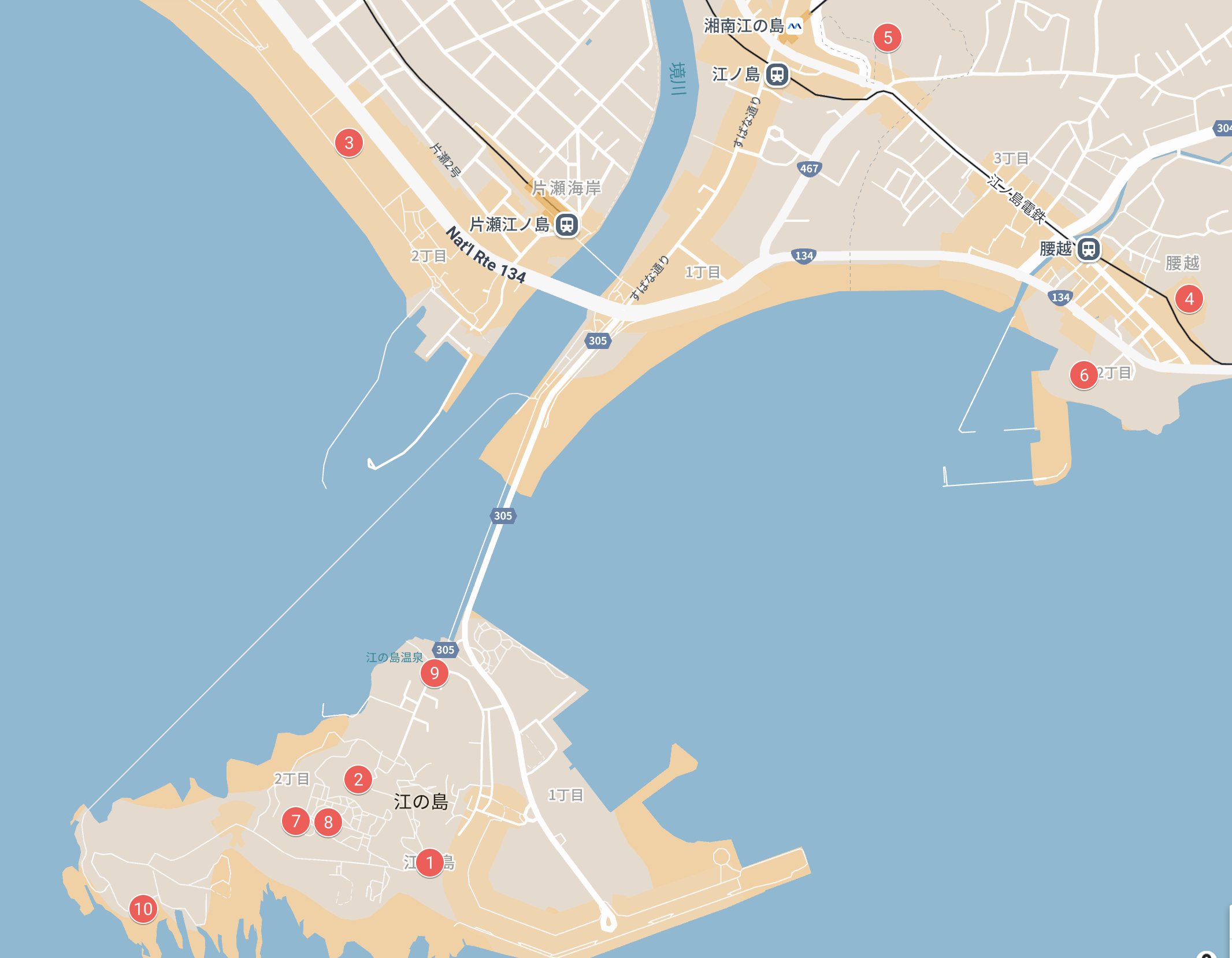AREA
H
AREA
H
Enoshima Area

A land of natural beauty and sea gods watching over us. Tour ancient shrines and aquariums to experience the harmony of the sea and history.
Toshi’s Kamakura sightseeing map
- Enoshima
- Eshima Shrine
- Enoshima Aquarium
- Manpukuji Temple
- Longkou Temple
- Koyurugi Shrine
- Enoshima Sea Candle
- Enoshima Samuel Cocking Garden
- Enoshima Benzaiten Nakamise Street
- Enoshima Iwaya Caves
Features
"The area around Enoshima is a beautiful region that blends rich nature and history and can be visited by a short trip from Kamakura. This area is known for Enoshima's natural beauty and a variety of tourist attractions, including the historic temples and shrines located on and around the island. While Enoshima itself has attractive spots such as Enoshima Shrine, which enshrines the sea god, and Enoshima Sea Candle, which offers a panoramic view of Sagami Bay and Mt. Fuji, there are also other places worth visiting around Enoshima, such as Manpuku-ji Temple and Ryukuchi-ji Temple. There are many scattered.
Enoshima Shrine is a historic shrine on Enoshima that enshrines the god of water and the sea, and is said to bestow divine blessings on you, such as happiness, wealth, and improvement in the arts. Enoshima Aquarium offers educational programs and exhibits that showcase the diversity and beauty of marine life and raise awareness of nature conservation. Manpukuji Temple was built in a place rich in nature where a prayer for the exodus of an epidemic was granted, and it is also known as the place where Minamoto no Yoshitsune prayed for reconciliation. Ryukouji Temple is the historical place where Nichiren escaped execution and is highly valued as a cultural property. Kodo Shrine was founded by Yoritomo's veteran vassals, and is rich in historical episodes such as the shrine where Nitta Yoshisada prayed for victory in his attack on Kamakura. These spots offer visitors to Enoshima and its surrounding areas an opportunity to experience the natural beauty and deep history of Japan."
Sightseeing Spot
-
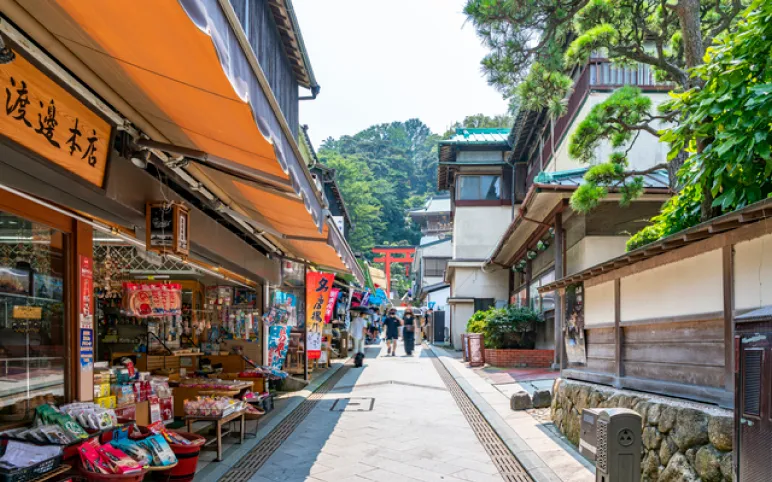
Enoshima
A fascinating island with history and nature
Enoshima is a fascinating tourist destination known for its natural beauty, historic temples, and stunning scenery. Enoshima Shrine, which enshrines the sea god, Enoshima Sea Candle, an observatory lighthouse that overlooks Sagami Bay and Mt. Fuji, a coastline loved by surfers, and restaurants serving fresh seafood all add to the appeal of this island. It is a unique place where you can experience the beauty of nature and deep history by walking around the island.
-

Eshima Shrine
Prayer for protection of the sea and prosperity
Treasure of the mysterious islandEjima Shrine is a historic shrine in Kamakura that enshrines the god of water and the sea, with the beautiful sea in the background. It enshrines the three sister goddesses born from the vow of Amaterasu Omikami and Susano no Mikoto, and is said to bestow divine blessings on those who visit, such as happiness, wealth, and improvement in the arts. It was visited by many people during the Edo period (17th to 19th centuries), and is a symbol of peace and prosperity surrounded by natural beauty, rich in history and legends.
-

Enoshima Aquarium
Fusion of science and nature
Journey from Kamakura to the seaEnoshima Aquarium is a place that showcases the diversity and beauty of marine life. We convey the importance of the ocean through dolphin shows and exhibits of large marine creatures. With educational programs and exhibits that raise awareness of conservation, this aquarium invites people of all ages to experience the depths of the ocean.
-
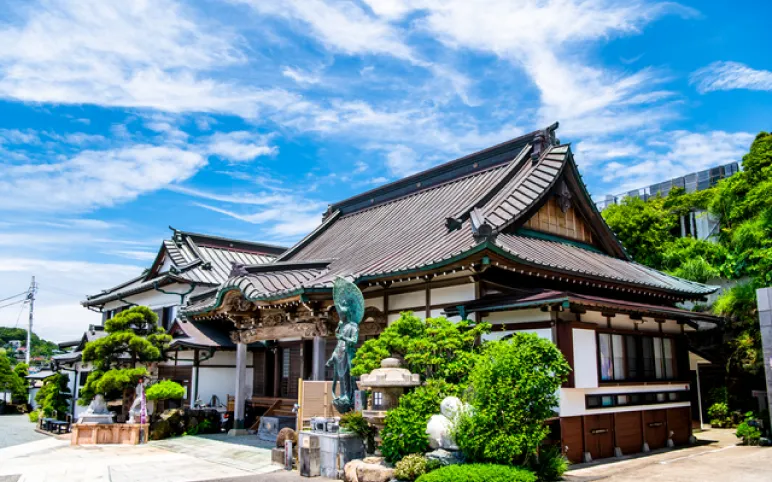
Manpukuji Temple
Yoshitsune's Prayer for Reconciliation
Silent Testimony of Manpukuji TempleManpuku-ji Temple is a place rich in nature where prayers to ward off epidemics are said to have come true and illnesses to be cured.In the Nara period (8th century), Gyoki was built on the orders of Emperor Shomu. ) was erected by. The ``Yakushi Sanzon'', a secret Buddha statue that is only open to the public on New Year's Eve, is a guardian deity of health and healing. It is also famous as the place where Minamoto no Yoshitsune held the ``Koshigoejo'' to pray for reconciliation, and it is a sacred place that is steeped in history and heroic legends, with relics related to Benkei remaining.
-
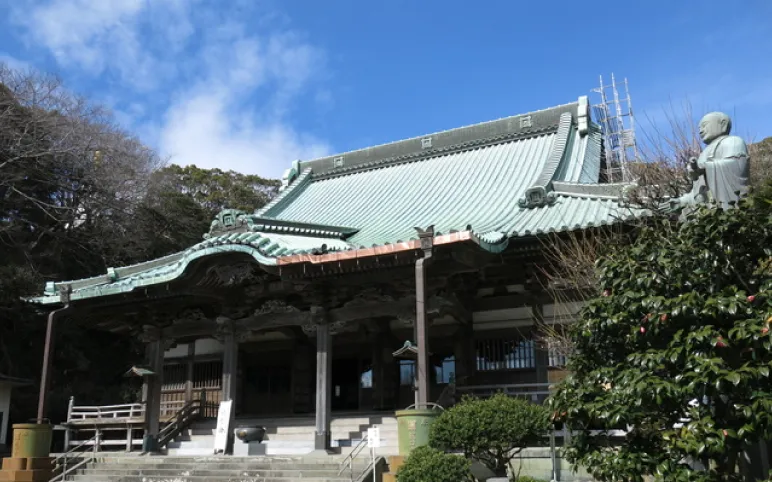
Longkou Temple
Nichiren's miracles and legacy
The quiet tale of Ryuguchiji TempleRyukouji Temple is located in Koshigoe and is a Nichiren sect temple whose symbol is the large Niomon gate. It is a historical place where Nichiren escaped execution, and the stone on which he sat is housed in the main hall. The principal object of worship is a teaching based on Nichiren's ``Rissho Ankokuron,'' and the Lotus Sutra is chanted to pray for the stability of the country. It has high value as a cultural property, including a five-storied pagoda that is listed as one of Kanagawa's top 100 buildings, making it a must-see place for those interested in history and culture.
-

Koyurugi Shrine
Witness of time
A legendary sacred place overlooking the seaKoyurugi Shrine is a historic shrine that was founded in the late 12th century by Moritsuna Sasaki, a veteran vassal of Yoritomo. The name originates from the natural beauty of Mt. Kodo that I felt while visiting Enoshima Benzaiten and the legend of "Koyurugi no Matsu". This shrine is rich in historical episodes, such as Nitta Yoshisada's prayer for victory during the invasion of Kamakura, and Odawara Castle lord Okubo Tadazane's dedication to the Sanjinja Shrine.This shrine is a great place to view the sea. It is located in a location that conveys the history and natural beauty of Kamakura to visitors.
-
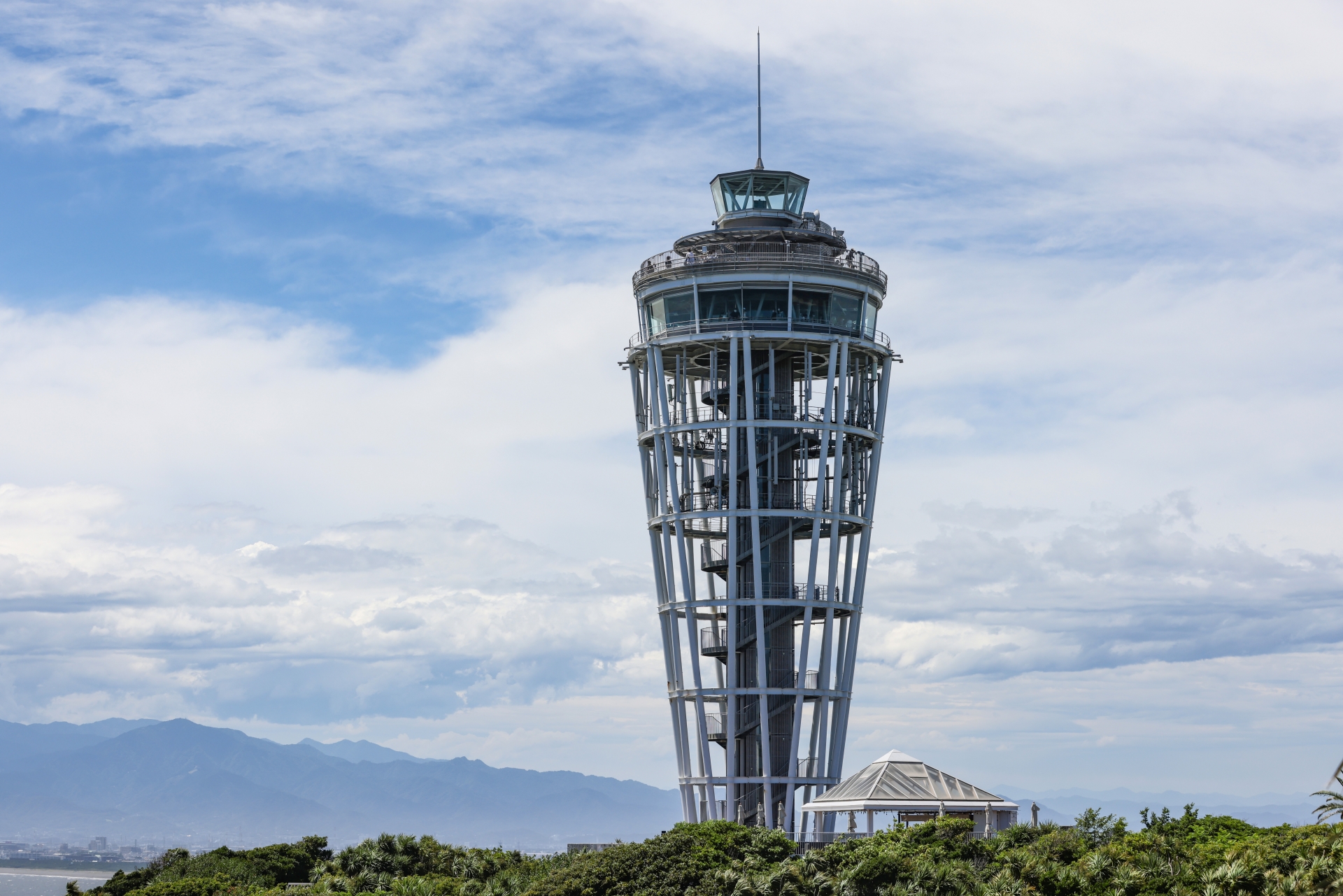
Enoshima Sea Candle
A Tower of Light and Wind Offering Stunning Views
The "Enoshima Sea Candle," offering sweeping views of the sea and sky, is a modern observation tower reborn from Japan’s first privately operated lighthouse. From its height of approximately 60 meters above ground, you can enjoy panoramic vistas that extend to Mt. Fuji, the Izu (伊豆) Peninsula, and the Bōsō (房総) Peninsula. It’s especially breathtaking at sunset, when the "Diamond Fuji"—the sun setting atop Mt. Fuji—can sometimes be seen. In winter, the "Jewel of Shōnan" illuminations transform the entire tower into a dreamy lightscape, blending art and nature into a unique experience each season. It’s a landmark well worth visiting and a highlight of any trip to Enoshima (江の島).
-
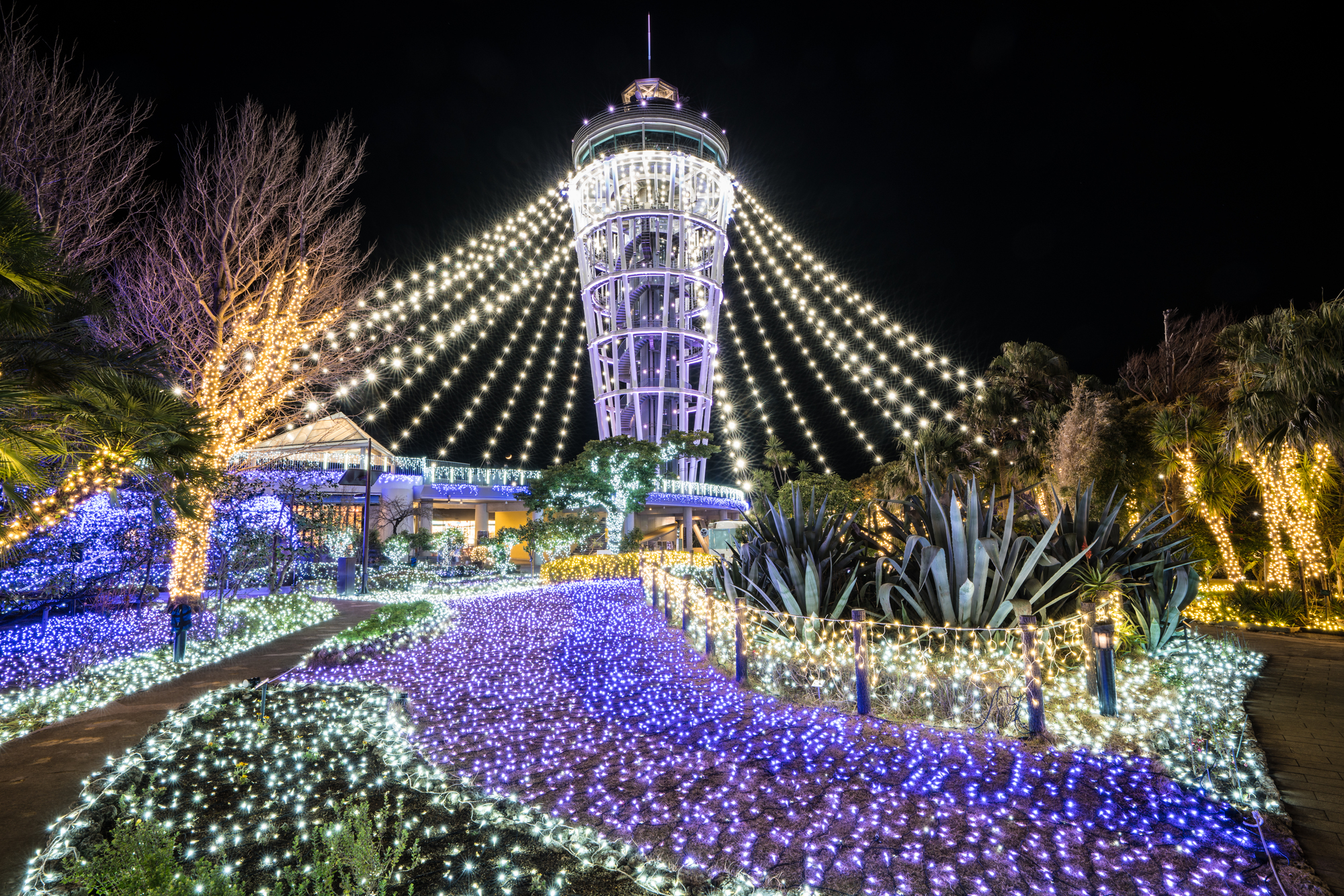
Enoshima Samuel Cocking Garden
A Magical Garden Where the East Meets the West
This garden was developed on the site of a former botanical garden built in the early 20th century by Samuel Cocking, a British merchant who lived in Japan during the Meiji era. It is a captivating space where Western horticultural techniques harmonize with Japan’s natural beauty. Visitors are charmed by seasonal flowers and plants, the enchanting winter illumination event “Shonan no Hoseki (Shonan's Jewel),” and the breathtaking views from the Enoshima Sea Candle observation tower. This garden, where history, nature, and culture intersect, offers a unique way to rediscover the charm of Enoshima.
-

Enoshima Benzaiten Nakamise Street
A Sensory Journey Along the Path of the Gods
Enoshima Benzaiten Nakamise Street (江の島弁財天仲見世通り), the lively gateway to Enoshima sightseeing, is a bustling 150-meter approach road where spiritual visits, local cuisine, and shopping come together. The street is lined with local specialties such as octopus rice crackers, shirasu (whitebait) rice bowls, and the famous Meoto Manju (女夫饅頭) from long-established Japanese confectionery shops, making it perfect for enjoying while strolling. Historical highlights also dot the area, including Iwamotoro (岩本楼), a historic inn preserving the spiritual traditions of the Kamakura (鎌倉) period, and a restored black post box from the Meiji (明治) era. As the pathway to Enoshima Shrine (江島神社), which enshrines the goddess Benzaiten (弁財天), the street has long been cherished by pilgrims and now offers a full-sensory experience of Enoshima's culture.
-
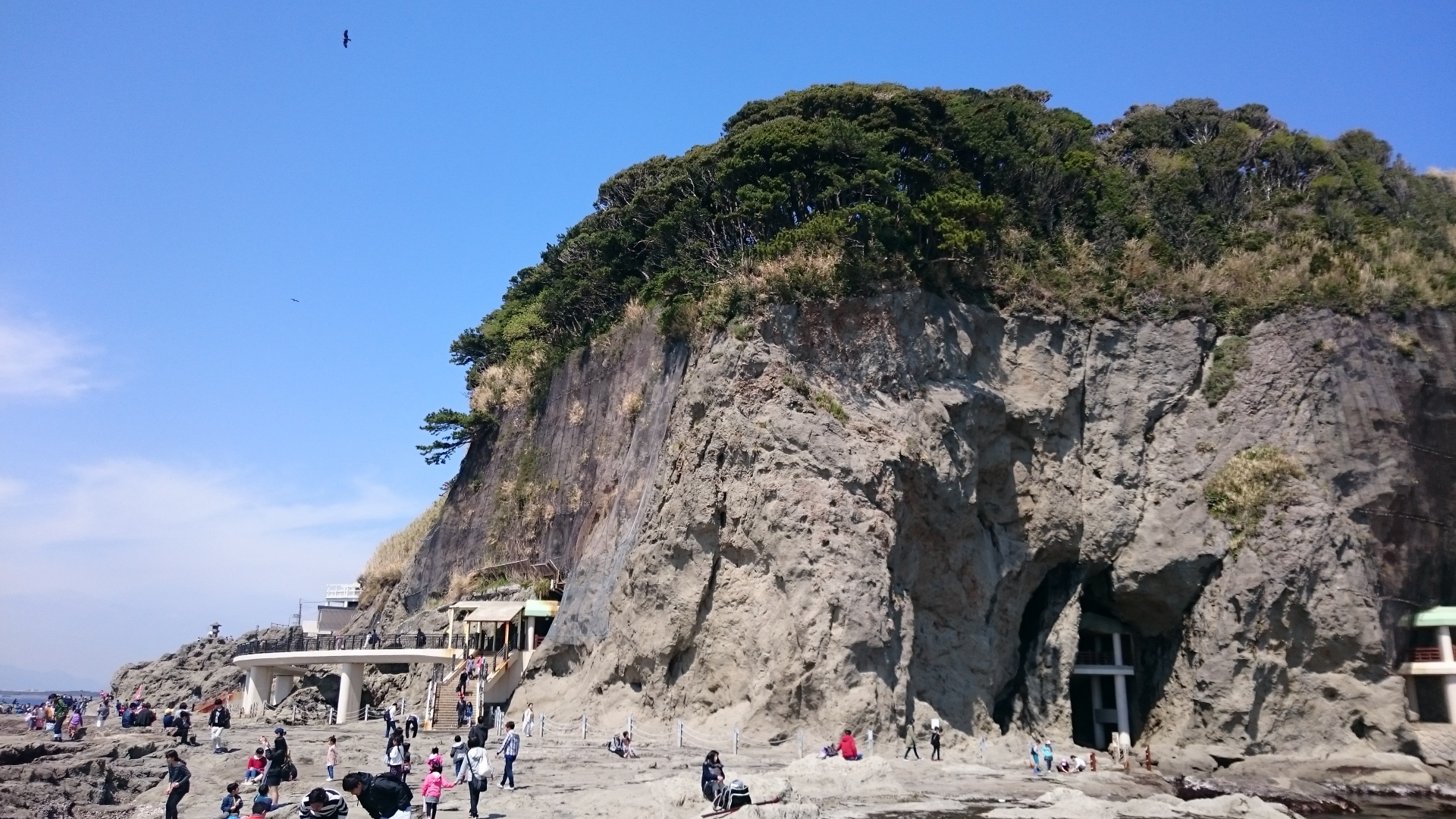
Enoshima Iwaya Caves
A Prayerful Cave Woven from Sea and Myth
Enoshima Iwaya is a mystical sea cave shaped by marine erosion, where the natural beauty of the coastline meets centuries of spiritual devotion. With legendary roots dating back to the mid-6th century, this sacred site is also known as a place of prayer for Minamoto no Yoritomo, a prominent Kamakura-era Samurai. Within its dreamlike illuminated interior, visitors can sense legends of celestial maidens and dragon gods, as well as traces of ancient ascetic practices. Exploring the cave with a candle in hand, taking in the stunning views of the sunset and Mount Fuji, and experiencing the spiritual link to Enoshima Shrine all combine to create a multisensory journey.

